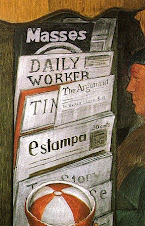By Gene Clancy
Published Sep 18, 2011 10:17 PM
Unions mounted a general strike in Italy in 100 cities and organized mass protests in Spain on Sept. 6 as they battled government efforts to solve Europe’s debt crisis on the backs of the workers.
Parts of Italy’s public transport network ground to a halt, and the strike closed major attractions such as the Colosseum in Rome as tens of thousands of workers took to the streets across the country.
“We are on the edge of the abyss, we need responsible government,” said CGIL union leader Susanna Camusso.
“We are striking against measures that are irresponsible and which put all of the burden on public sector workers,” she told strikers in Rome. (BBC, Sept. 6)
And in Spain, whose jobless rate is the highest in the industrialised world at nearly 21 percent, unions were also taking to the streets in a show of force against a constitutional amendment which would require that the government balance its budget. So intent is Prime Minister José Luis Rodríguez Zapatero on placating the international financial markets, that he is planning to ram through the measure without even giving the Spanish people a chance to vote on it.
“We [have planned] a demonstration joined by thousands of people,” Labour Union spokesman Luis María González said of the Spanish protests. “More than anything it is to demand a referendum.”
In a speech on the same day as the demonstrations, the head of the World Bank kept up the pressure on European governments to get their economies back on track, saying their patience was running out. “We’re reaching a key decision point for European leaders,” Robert Zoellick said. (AFP Journal, Sept. 6)
And Italy received a stern warning from the head of the European Central Bank to stick to its austerity plan after Prime Minister Silvio Berlusconi, suffering from an all-time low approval rating, showed signs of compromising.
Jean-Claude Trichet told a forum in northern Italy that sticking to the plan was “absolutely decisive” to Italy’s credit worthiness. Italy’s austerity plan also calls for a balanced budget.
Apart from the protest in Rome, more than 10,000 were taking part in an anti-austerity demonstration in Florence, and marches were underway in Genoa and other towns and cities across Italy.
The eight-hour strike caused major disruptions to public transport, with airlines, trains, buses and ferries announcing cancellations and delays.
The strike was also affecting hospitals and postal services. Schools were unaffected, with classes yet to begin for the year.
Red balloons bearing the union logo floated above the march, which was awash with banners calling for rejection of the draft plan. “Change the austerity plan to give the country a future,” read one. (New York Times, Sept. 7)
Berlusconi’s government adopted the draft austerity plan on Aug. 12 in a bid to bring Italy’s budget into balance in 2013 instead of 2014, as had been planned earlier.
As in Spain, these “balanced budget” measures are galling to workers, who have witnessed massive government bailouts for giant banks and massive unemployment. They are clearly an attempt to force poor and working people to pay for the current world economic crisis.
The governments of Spain and Italy showed which side they were on the day after the demonstrations. They both passed the repressive, undemocratic and economically crushing austerity measures. These steps have left the financial crisis unresolved while undercutting the workers, drawing larger sections of the working class into struggle.
Subscribe to:
Post Comments (Atom)










































No comments:
Post a Comment